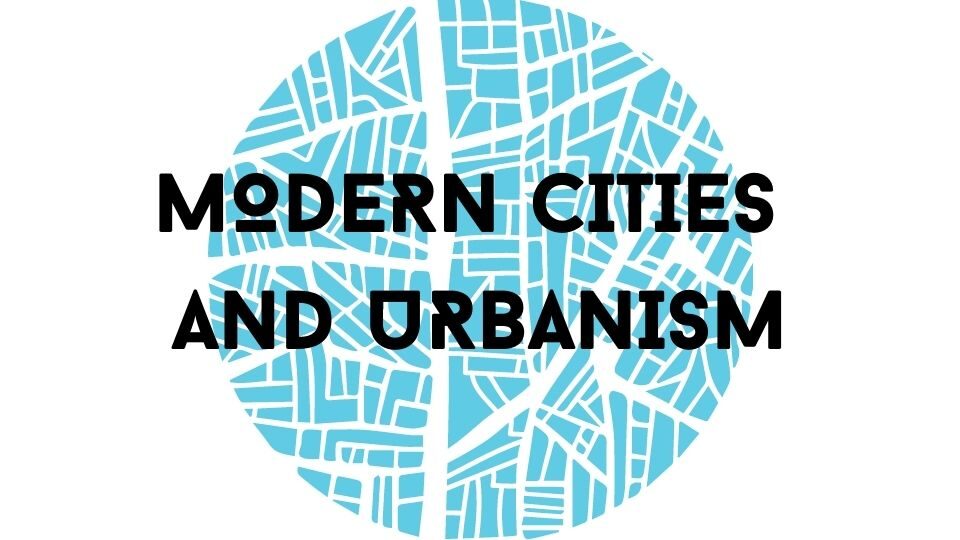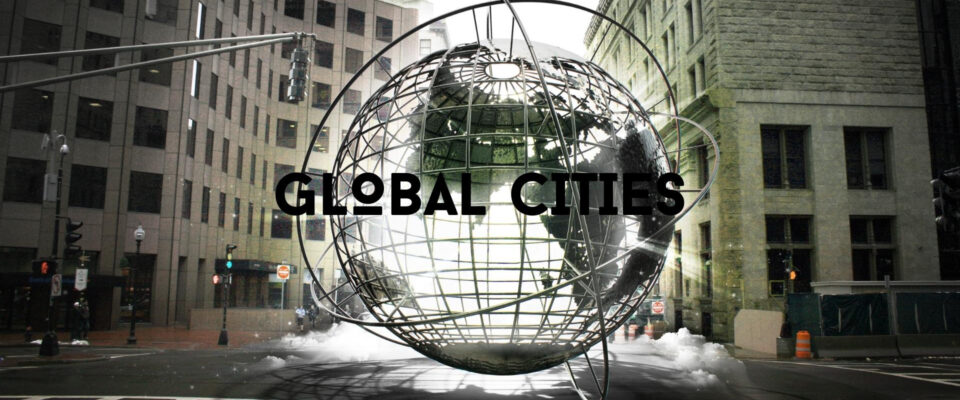QUESTIONS: How did global economic flows impact Jakarta’s urban development and status as a global city? How do Jakarta’s globalizing processes bring Sassen’s Global City Theory into question?
Jakarta and Global City Aspirations
When Jakarta began liberalizing its economy in the 1980s, the city experienced a significant increase in foreign direct investment (FDI), establishing itself as Indonesia’s gateway city to the rest of the world in manufacturing and finance (Indraprahasta et al. 2018, 53). Since Jakarta was in the midst of a manufacturing boom, countries such as Japan were incentivized to invest in Jakarta due to low production costs in labor-intensive sectors such as textiles, garments, and footwear manufacturing. In 1988, Indonesia loosened its banking regulations and allowed foreign banks to operate more broadly in the country, which helped facilitate banking loans for Jakarta’s growing real estate market (Firman 1998, 234; Firman 1999b, 450). From 1990 to 1997, Jakarta’s role as the gateway city deepened, as over 50 percent of the country’s total inbound FDI was invested into the city (Indraprahasta et al. 2018, 54).
Deregulated markets allowed the private sector to flourish and incentivized innovation to bridge gaps between government services and the needs of the public (Thynell 2018, 16-17). The industrial boom brought about new housing demands by Jakarta’s middle and upper classes and a growing interest in real estate speculation after the liberalization of land ownership in 1993 (Firman 2004, 357; Bunnell and Miller 2011, 37). By May 1997, months before the Asian Financial Crisis (AFC), bank loans for property made up 20 percent of all bank loans at approximately Rp. 37.1 trillion (Firman 1998, 234-235). While Indonesia benefited from the East Asian Miracle, the 1997 Asian Financial Crisis also illustrated Jakarta’s economic interdependence with the rest of Asia. Due to the lack of government oversight, the Indonesian banking system allowed property loans to go unchecked (Bunnell and Miller 2011, 38). Known locally as the krismon (translated literally as “crisis”), the AFC led to a significant decline in investments, large worker layoffs, and the closing of firms (Firman 1999a, 69; Indraprahasta et al. 2019, 6). Jakarta quickly turned into a “city of crisis” and global city aspirations were put on hold (Firman 1999b, 449).
Uneven housing development and urban inequality
In pursuit of modernity and the global city status, the Indonesian government encouraged land developers to buy land on the outskirts of Jakarta from low-income farmers in the 1990s (Firman 2004, 351, 354). Consequently, approximately one half of the land surrounding the city were controlled by developers for new housing estates (Firman 2004, 355). Since land development was occurring simultaneously with Indonesia’s reformasi period, the government had shifted responsibility of the city’s future in urban planning over to the private sector instead of the government leading Jakarta’s urban development, (Thynell 2018, 25; Leitner and Sheppard 2018, 444).
As land developers began construction on new housing projects, the “new town” style residential developments evolved into a marker of social status for Jakartans. Advertised as safe havens from city noise, crime, and pollution, these self-contained new town utopias generally consist of single-family homes, shopping malls, parks, entertainment centers, and hospitals (Firman 2004, 354). Since the operations of new towns are managed entirely by the private sector, residents in new towns receive better infrastructural services, such as water, electricity, waste management, and telecommunications (Firman 2004, 359). Thynell pointed to the creation of parallel worlds: the public spaces that the general public occupy and the private insular world of Jakarta’s elite, where they only move through and occupy private spaces – from private new town communities to private cars (Thynell 2018, 31).
In contrast, kampungs – or villages – were the first settlements for non-European populations outside the walled colonial city during the Dutch era (Supriatna and van der Molen 2014, 381), which evolved into informal settlements that formed in the city center because of inadequate government housing in the twentieth century (Thynell 2018, 24). Although kampungs were not well-connected to public infrastructure, kampung residents invested in their private living spaces, improving kampung conditions gradually and unevenly (Supriatna and van der Molen 2014, 382).
The Kampung Improvement Program (KIP) was a government solution to modernize kampungs in Jakarta and surrounding cities from 1969 to 2000 (Supriatna and van der Molen 2014, 380). Financed through World Bank loans and the city government, KIP upgraded kampung infrastructure such as roads, sidewalks, and sanitation measures (Devas 1981, 19). However, the lack of urban land limited KIP’s scope of improving measures against natural disasters and emergencies (Supriatna and van der Molen 2014, 385).
In 1988, the government of Jakarta establish regulations that classified kampungs as legal and illegal settlements, giving the government legitimacy in demolishing and remove illegal kampungs (Leitner and Sheppard 2018, 445). Although kampungs help bridge the housing gap, the government’s prioritization of Jakarta’s global image has led it to hire “gangs of thugs” to evict kampung residents and demolish settlements for new construction (Bunnell and Miller 2011, 39). The removal of the kampungs signified the removal of obstacles to Jakarta’s world city aspirations (Leitner and Sheppard 2018, 450).
Situating the Global in Jakarta
According to Friedmann’s 1986 World City Hypothesis, world cities are situated in the context of the flows of capital and economic activity (Surborg 2011, 318). Sassen narrows the specifications of cities in her Global City Theory to cities that only engage in advanced producer services (Indraprahasta et al. 2017, 149). She points to the era of privatization and liberalization of global economies in the 1980s as the turning point for globalization, where the state is no longer the actor but rather the city (Sassen 2002, 1). Sassen later describes globalization as a multi-scalar and multidimensional process, with globalizing processes occurring at both the subnational and national level across borders (Sassen 2003, 2, 11).
However, both Freidmann and Sassen’s approaches to theorizing urban development are rooted in research on advanced global economies and lack empirical studies on the urbanization processes of the global south (Indraprahasta et al. 2019, 2). Besides placing cities in static states of being “worldly” and being “global,” neither approach acknowledge the processes in which cities continually evolve and globalize through different networks outside of economic flows. Surborg (2011) critiques both Friedmann and Sassen’s work for their static view on the world urban network (Surborg 2011, 321).
The lack of a nuanced understanding of global south cities and their urbanization processes simplifies their role in global networks as merely the peripheral nodes of core global north cities. Indraprahasta et al. emphasize the importance of recognizing diverse pathways to city formation to understand different urban forms (Indraprahasta et al. 2019, 2). Even within a global city itself, there are aspects of the global and the “non-global.” Roy (2011) critiques the lack of literature and research on the interactions between globalization and populations in poverty (Roy 2011, 224).
In the context of Jakarta’s urbanization, the dual visions of a global Jakarta between the cosmopolitan and the informal illustrate the tensions between global north and south’s globalizing norms since the second half of the twentieth century. From the actions of the city’s government, it is apparent that Jakarta heavily prioritizes Western globalization, incentivizing the development of high-end commercial and residential spaces and dismissing the role that low-income Jakartans and informal settlements play in global economic flows.
By placing emphasis on global north definitions of globalization and global cities, Jakarta failed to recognize the importance and potential of the informal economy and informal settlements in the city’s urban development trajectory. Roy uses the term “subaltern urbanism” to reshape urban studies and to give political identity and agency to marginalized populations (Roy 2011, 227). Using the framework of Indraprahasta et al. (2019) and Roy (2011), the urbanization processes of kampungs not only is informed by the external forces of global capitalism but the role of the kampung also exerts influence on Jakarta’s urban development processes through its organic growth and human-centered communities. Consequently, the kampung is a place that is situated in complex contradictions of both the local and the global.
However, in the 2010s, neoliberal capitalist forces rather than government responsibility motivated Jakarta’s government to commodify kampungs as a method to increase tourism revenue (Budianta 2019, 245). The government embraces and exaggerates kampung-ness to formulate a branding strategy for the settlements, shifting their image from a transgressive urban space to a packaged cultural heritage site (Budianta 2019, 252).
Bibliography
Budianta, Melanie. “Smart kampung: doing cultural studies in the Global South.” Communication and Critical/Cultural Studies 16.3 (2019): 241-256.
Bunnell, Tim and Michelle Ann Miller. “Jakarta in Post-Suharto Indonesia: Decentralisation, Neo-liberalism and Global City Aspiration.” Space and Polity 15.1 (2011): 35-48.
Devas, Nick. “Indonesia’s Kampung Improvement Program: an evaluative case study.” Ekistics 48.286 (1981): 19-36.
Firman, Tommy. “A great “urban crisis” in Southeast Asia.” Cities 16.2 (1999): 69-82.
Firman, Tommy. “From ‘Global City’ to ‘City of Crisis’: Jakarta Metropolitan Region Under Economic Turmoil.” Habitat International 23.4 (1999): 447-466.
Firman, Timmy. “New Town Development in Jakarta Metropolitan Region: A perspective of spatial segregation.” Habitat International 28 (2004): 349-368.
Firman, Timmy. “The restructuring of Jakarta Metropolitan Area: A “global city” in Asia.” Cities 15.4 (1998): 229-243.
Indraprahasta, Galuh Syahbana and Ben Derudder. “Probing the position of the Jakarta metropolitan area in global inter-urban networks through the lens of manufacturing firms.” Asian Geographer 34.2 (2017) 147-167. DOI: 10.1080/10225706.2017.1387161
Indraprahasta, Galuh Syahbana, Ben Derudder, and Jorn Koelemaij. “Global-Local Dynamics in the Transformation of the Jakarta Metropolitan Area into a Global City Region.” disP – The Planning Review 54.3 (2018) 52-62. DOI: 10.1080/02513625.2018.1525212
Indraprahasta, Galuh Syahbana and Ben Derudder. “World City-ness in a historical perspective: Probing the long-term evolution of the Jakarta metropolitan area.” Habitat International 89 (2019): 1-10.
Leitner, Helga and Eric Sheppard. “From Kampungs to Condos? Contested accumulations through displacement in Jakarta.” Environment and Planning 50.2 (2018) 437-456
Roy, Ananya. “Slumdog cities: Rethinking subaltern urbanism.” International Journal of Urban and Regional Research. 35.2(2011): 223–238.
Sassen, Saskia. “Locating Cities on Global Circuits.” In Global Networks, Linked Cities. (New York: Taylor & Francis Group, 2002) 1-36.
Sassen, Saskia. “Globalization or Denationalization?” Review of International Political Economy 10.1 (2003): 1-22.
Supriatna, Andri and Paul van der Molen. “Land readjustment for upgrading Indonesian kampung: a proposal.” South East Asia Research 22.3 (2014): 379-397.
Surborg, Björn. “World Cities Are Just “Basing Points for Capital”: Interacting with the World City from the Global South.” Urban Forum 22 (2011): 315-330. DOI: 10.1007/s12132-011-9129-6
Thynell, Marie. “Urban inequality in a fragile global city.” In Jakarta: Claiming Spaces and Rights in the City, edited by Jörgen Hellman, Marie Thynell, Roanne van Voorst, 58-74. New York: Routledge, 2018.


One Reply to “Jakarta: Global Cities”
Comments are closed.